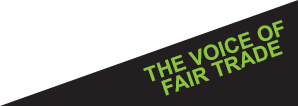The International Fair Trade Charter defines a vision for a fairer world
Many people use the term “fair trade”, but what does it actually mean? Today, more than 250 organizations around the world are uniting to launch an International Fair Trade Charter that sets down the fundamental values of Fair Trade and defines a common vision towards achieving the Sustainable Development Goals (SDGs).
Business as usual will not deliver the step change needed to meet the SDGs, adopted by the world’s nations on 25 September 2015 amid a fanfare of optimism, and whose third anniversary is being marked today in New York and around the world. Far from marching a steady course to reach these global goals by 2030, in some areas we are even going backwards. A recent United Nations report[1] shows that hunger has actually risen in the past three years after a long period of decline, leaving one in nine people undernourished. While the world economy has grown, according to the World Inequality Report: “At the global level, inequality has risen sharply since 1980”.[2]
The International Fair Trade Charter sets out a different vision: a world in which justice, equity, and sustainable development are at the heart of trade structures, business models and practices so that everyone, through their work, can maintain a decent and dignified livelihood and develop their full human potential.

In Europe, there are 76 Fair Trade Enterprises who are pioneering business models that put people and planet first. Trading everything from food to fashion, these are businesses that exist to benefit their workers, farmers, and artisans. The WFTO is the global community of these businesses, verifying and supporting them on their journey of driving inclusive economic development.
The Charter, initiated by Fairtrade International and the World Fair Trade Organization, defines new models that build a stronger economy and environment for all. It has been recognized by an escalating number of diverse local, national and international organizations from across the cooperative, social enterprise, organic, farmer and global solidarity movements.
“We see spiraling inequality and entrenched poverty because businesses and trade have been shaped to prioritize profits above all else. Fair Trade shows that a better way is possible. Our new Charter shows how our vision and experience can help reshape business and trade around the world.” said Erinch Sahan, Chief Executive of the World Fair Trade Organization.
Central to the International Fair Trade Charter is a common understanding that the benefits of global trade must be shared more equally across farmers, workers, companies, and consumers.
Dario Soto Abril, Global Chief Executive Officer of Fairtrade International, said: “Trade can and should be used as a tool to help close the gaps across society. For decades, the Fair Trade movement has pioneered approaches that have the potential to transform the broader global economy. The International Fair Trade Charter provides a point of reference and inspiration for others to follow suit.”
The global Fair Trade movement urges policy-makers, business leaders, citizens and consumers to embrace the vision of the International Fair Trade Charter, to create a global trading system populated by supply chains and models of business that leave no one behind.
By supporting Fair Trade producers and businesses, advocating to transform the rules of global trade and buying Fair Trade products, we can all act to make sustainable and fair development a reality and give the world a fighting chance of reaching the goals it set for itself three years ago.
You can find the International Fair Trade Charter here.
For further information contact: communication[at]wfto-europe.org
[1] The State of Food Security and Nutrition in the World 2018
[2] World Inequality Report 2018





